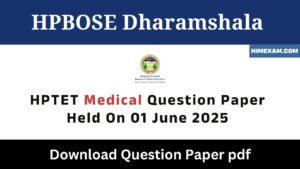Indian Art And Culture Question Answer Set-2
||Indian Art & Culture Question Answer Set-2||Indian Art & Culture MCQ Set-2||
11. Papeti is the festival of
(A) Parsis
(B) Jains
(C) Sikhs
(D) Buddhists
Explanation:-Papeti is one of the auspicious days of Parsi Calendar. It stands for the new start and new beginning. It comes in the month of Navroj by the Parsis. On Pateti day, the Parsis visit the fire temple.
12. Which among the following city was given as guru dakshina by Pandavas to Guru Dronacharya?
(A) Rawalpindi
(B) Nainital
(C) Hastinapur
(D) Gurgaon
Explanation:-As per legend, Gurgaon in Haryana was given as gurudakshina to Guru Dronacharya by his students — the Pandavas — and hence it came to be known as Guru-gram, which in course of time is said to have got distorted to Gurgaon. The BJP government in Haryana renamed Gurgaon as Gurugram in April 2016.
13. Jalikattu is associated with which Indian festival?
(A) Onam
(B) Pongal
(C) Bihu
(D) Hornbill
Explanation:-Jallikattu is typically practised in the Indian state of Tamil Nadu as a part of Pongal celebrations on Mattu Pongal day. It is a traditional spectacle in which a bullis released into a crowd of people and multiple human participants attempt to grab the large hump of the bull with both arms and hang on to it while the bull attempts to escape.
14. Who amongst the following is renowned in the field of painting?
(A) Parveen Sultana
(B) Prof. T.N. Krishnan
(C) Ram Kinkar
(D) Raja Ravi Varma
Explanation:-Raja Ravi Varma was an Indian painter from the princely state of Travancore who achieved recognition for his depiction of scenes from the epics of the Mahabharata and Ramayana. His paintings are considered to be among the best examples of the fusion of Indian traditions with the techniques of European academic art. During his lifetime Varma is most remembered for his paintings of sari-clad women portrayed as shapely and graceful.
15. Le Corbusier, the architect of Chandigarh was a national of
(A) The Netherlands
(B) Portugal
(C) U.K.
(D) France
Explanation:-Charles-Edouard Jeanneret, better known as Le Corbusier, was an architect, designer, urbanist, and writer, famous for being one of the pioneers of what is now called modern architecture. He was born in Switzerland and became a French citizen in 1930. His career spanned five decades, with his buildings constructed throughout Europe, India and America. He was awarded the Frank P. Brown Medal and AIA Gold Medal in 1961.
16. In which field of Art Jamini Roy make his name ?
(A) Sculpture
(B) Music
(C) Painting
(D) Drama
Explanation:-Jamini Roy was an Indian painter. His key works were “Bride and two Companions”, 1952; and Dual Cats with one Crayfish”, 1968. His new style was a reaction against the Bengal School and Western tradition. His underlying quest was threefold: to capture the essence of simplicity embodied in the life of the folk people; to make art accessible to a wider section of people; and to give Indian art its own identity. He was awarded the Padma Bhusan in 1954
17. Where is the Swami Narayan temple, Akshar-dham located ?
(A) Dwaraka, Gujarat
(B) Puri, Orissa
(C) Mathura, Uttar Pradesh
(D) Gandhinagar, Gujarat
Explanation:-Akshardham in Gandhinagar is one of the largest temples in the Indian state of Gujarat. The temple complex combines devotions, art, architecture, education, exhibitions and research at one place which is spread in an area of 23 acres. The temple came to international attention when two heavily armed terrorists attacked it in September 2002. It is a predecessor to the Akshardham at Delhi, built by the same religious organisation, Bochasanwasi AksharPurushottam Swaminarayan Sanstha (BAPS) led by Pramukh Swami Maharaj. It was inaugurated on November 2, 1992
18. What do the paintings of Ajanta depict?
(A) Ramayana
(B) Mahabharata
(C) Jatakas
(D) Panchatantra
Explanation:-The Ajanta Caves in Aurangabad district of Maharashtra are 30 rock-cut cave monuments which date from the 2nd century BCE to about 500 or 600 CE. The caves include paintings and sculptures considered to be masterpieces of Buddhist religious art, with Buddha figures and depictions of the Jataka tales. The caves form the largest corpus of early Indian wall-painting. The site is a protected monument under the Archaeological Survey of India, and since 1983, the Ajanta Caves have been a UNESCO World Heritage Site.
19. Where did the miniature paintings of Indian heritage develop?
(A) Guler
(B) Mewar
(C) Bundi
(D) Kishengarh
Explanation:-The art of Miniature painting was introduced to the land of India by the Mughals, who brought the muchrevealed art form from Persia. In the sixteenth century, the Mughal ruler Humayun brought artists from Persia, who specialized in miniature painting. The succeeding Mughal Emperor, Akbar built an atelier for them to promote the rich art form. These artists, on their part, trained Indian artists who produced paintings in a new distinctive style, inspired by the royal and romantic lives of the Mughals. The particular miniature produced by Indian artists in their own style is known as Rajput or Rajasthani miniature. During this time, several schools of painting evolved, such as Mewar (Udaipur), Bundi, Kotah, Marwar (Jodhpur), Bikaner, Jaipur, and Kishangarh.
20. In which State is the folk painting ‘Madhubani’ popular ?
(A) West Bengal
(B) Orissa
(C) Bihar
(D) Assam
Explanation:-Madhubani painting or Mithila painting is a style of Indian painting, practiced in the Mithila region of Bihar state, India and the adjoining parts of Terai in Nepal. Painting is done with fingers, twigs, brushes, nib-pens, and matchsticks, using natural dyes and pigments, and is characterized by eye-catching geometrical patterns. There are paintings for each occasion and festival such as birth, marriage, holi, surya shasti, kali puja, Upanayanam (sacred thread ceremony), and durga puja.
||Indian Art & Culture Question Answer Set-2||Indian Art & Culture MCQ Set-2||
Join Our Telegram Group :- Himexam









